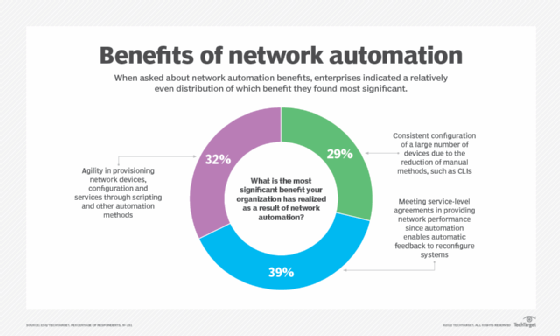In today’s fast-paced digital landscape, network infrastructure is the backbone of every successful organization. Managing these complex networks can be challenging, requiring significant time, resources, and expertise. Network automation software offers a powerful solution, streamlining operations, reducing errors, and improving overall efficiency. This article explores the top five benefits of implementing network automation software, highlighting how it can transform your network management strategy.
1. Increased Efficiency and Productivity
Network automation tools significantly reduce the time spent on repetitive tasks, freeing up IT staff to focus on more strategic initiatives. This translates to increased efficiency and improved productivity across the board.
- Reduced Manual Configuration: Automate repetitive tasks like device configuration, reducing manual errors and saving time.
- Faster Deployment: Quickly deploy new devices and services with automated workflows.
- Improved Response Times: Automate incident response to quickly resolve network issues.
2. Reduced Errors and Improved Reliability
Human error is a significant cause of network outages and performance issues. Automating network tasks minimizes these errors, leading to a more reliable and stable network environment.
Consider this: Studies show that human error accounts for up to 70% of network outages. Network automation directly addresses this vulnerability.
3. Enhanced Security and Compliance
Network automation helps enforce security policies and maintain compliance with industry regulations. Automated security checks and remediation actions strengthen your network’s defenses.
Security Automation Capabilities
Here’s a breakdown of how network automation enhances security:
| Feature | Description |
|---|---|
| Automated Vulnerability Scanning | Regularly scans the network for vulnerabilities and alerts administrators. |
| Automated Patch Management | Automatically applies security patches to network devices. |
| Automated Configuration Auditing | Ensures network configurations adhere to security policies. |
4. Cost Savings
By automating network tasks, organizations can reduce operational costs associated with manual labor, downtime, and security breaches. This leads to significant cost savings over time.
Where do the cost savings come from?
- Reduced Labor Costs
- Minimized Downtime
- Improved Resource Utilization
5. Improved Scalability and Agility
Network automation enables organizations to easily scale their network infrastructure to meet growing business demands. Automated processes simplify network expansion and adaptation to changing requirements.
Think of it like this: Automated network provisioning allows you to quickly add or remove network resources as needed, without manual intervention.
Benefits of Scalability
- Faster response to changing business needs
- Increased agility in deploying new applications
- Improved resource management
FAQ Section
Here are some frequently asked questions about network automation software:
What is network automation software?
Network automation software uses automated processes to configure, manage, and monitor network devices and services, reducing manual intervention and improving efficiency.
Is network automation suitable for all sizes of organizations?
Yes, network automation can benefit organizations of all sizes, from small businesses to large enterprises. The specific tools and features will vary depending on the organization’s needs and complexity of its network.
What are the key features to look for in network automation software?
Key features include automated configuration management, network monitoring, security automation, compliance reporting, and integration with other IT systems.

